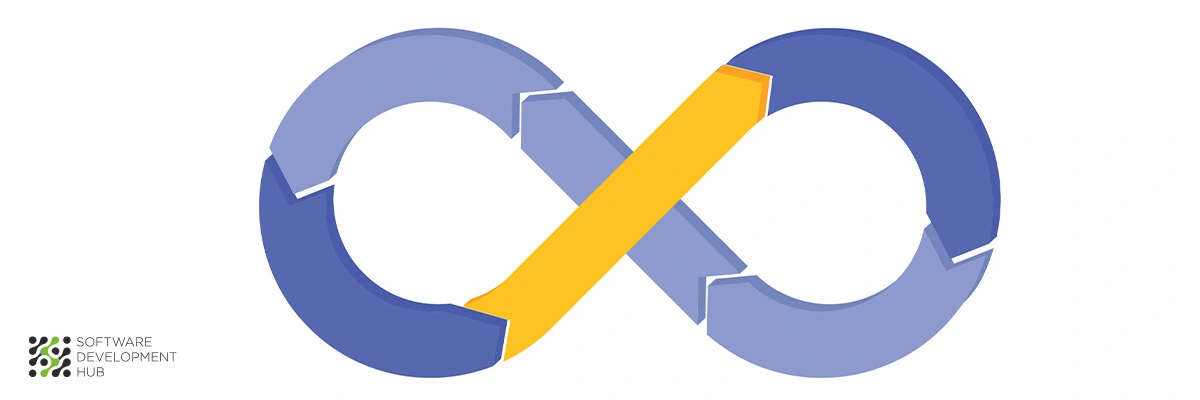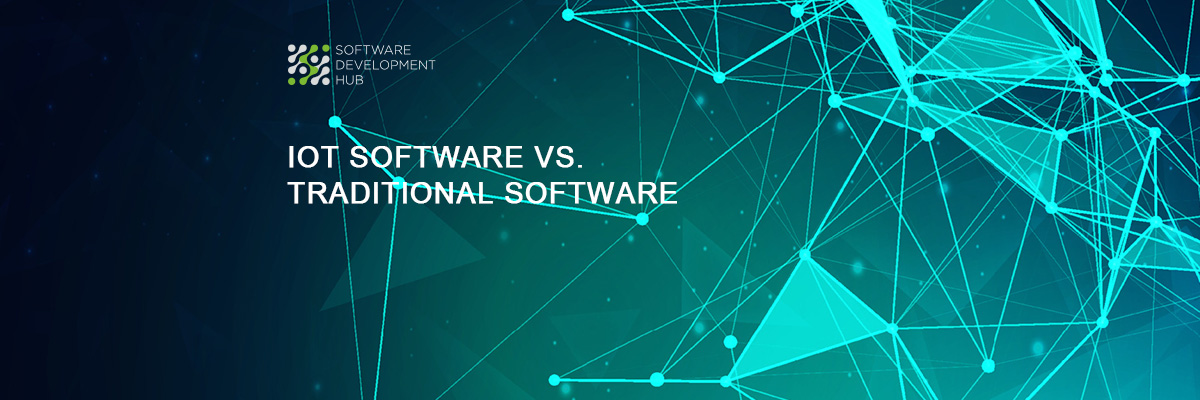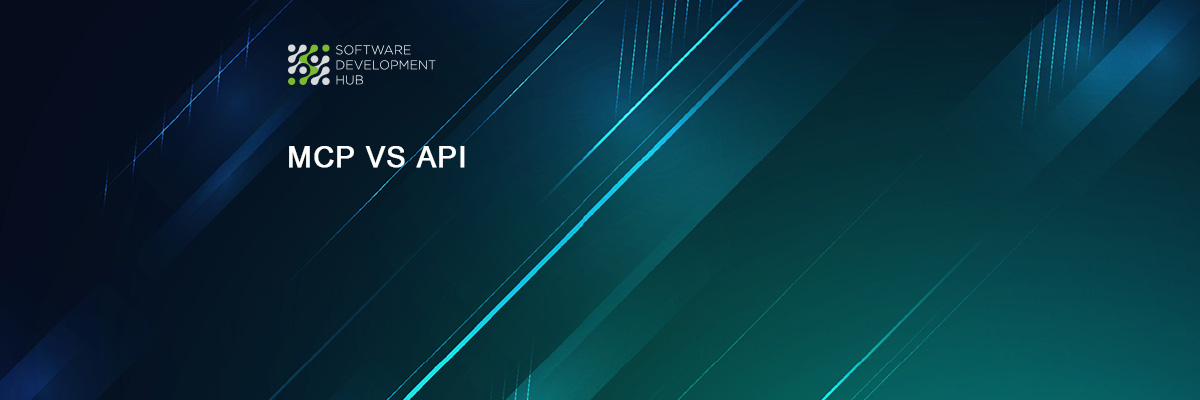The Human Side of DevOps: Building Skills and Culture
DevOps culture is not just about technology and automation - it has a remarkably strong human component that many organizations overlook. Research has identified 59 distinct human factors that directly influence DevOps success, making the people aspect just as critical as the technical elements.
Despite this reality, numerous companies continue approaching DevOps merely as a collection of tools and processes. This perspective misses the essential truth: DevOps represents a fundamental cultural shift that dismantles traditional barriers between development, operations, and other departments while establishing shared responsibility and a mindset of continuous improvement.
Let’s examine the crucial human aspects of DevOps as a Service, with particular attention to developing appropriate skills and cultivating the right mindset. Whether you're considering implementing DevOps practices or looking to enhance your existing approach, understanding both core principles and essential technical and interpersonal skills will help your team navigate the human dimensions of the DevOps transformation, including the implementation of CI/CD pipelines and cloud-native DevOps practices.
Understanding DevOps Culture at the Individual Level
At the individual level, DevOps culture represents a fundamental shift in our approach to work and professional relationships. Industry experts consistently identify people and culture as the primary factors in successful DevOps implementation, making the human element not just important but essential to master.
What makes DevOps different from traditional IT
Traditional IT operates through clearly defined silos where development creates code, testing validates it, and operations deploys and maintains it. Each department focuses exclusively on their specific responsibilities, often leading to a "not my problem" mentality once work is handed off. DevOps CI/CD takes an entirely different approach:
- Shared accountability: In DevOps culture, development and operations staff share equal responsibility for a product's success or failure, following a "you build it, you run it" philosophy.
- Small vs. large: Traditional IT typically relies on large batch releases, while DevOps favors smaller batch sizes that are easier to coordinate and carry less risk.
- Failure approach: Where traditional organizations attempt to eliminate failure entirely, DevOps teams acknowledge that failure is inevitable and instead focus on controlling "when and how they fail" – preferring to "fail small, fail early, and recover fast."
- Team structure: Instead of department-based divisions, DevOps creates cross-functional teams organized around specific projects, bringing together specialists who can deliver value throughout the entire product lifecycle.
- Release philosophy: Traditional IT aims for perfect, completed releases after extended development cycles, while DevOps enables faster, more agile development with frequent iterations through continuous integration and continuous delivery practices.
The mindset shift required for DevOps success
Adopting a DevOps culture demands fundamental changes in how individuals approach their work. First, team members must embrace continuous learning and improvement rather than defending established routines. This involves actively seeking feedback and viewing it as valuable input rather than criticism.
Transparency becomes essential in this environment – teams must communicate openly about challenges, progress, and failures. This builds trust and eliminates the blame culture that frequently characterizes traditional IT environments.
Additionally, individuals need to develop a customer-centric focus. When everyone understands the business goals and user requirements, they make better decisions about priorities and implementation details, especially when working with cloud-native applications.
Psychological safety plays a crucial role in DevOps culture as well. Team members need an environment where they can take calculated risks, experiment, and share both successes and failures without fear of blame. This supports innovation and continuous improvement.
Lastly, individuals must transition from a specialist mindset to a more collaborative, end-to-end perspective where they care about the entire product lifecycle, not just their particular area of expertise. This holistic view is crucial for effective implementation of CI/CD pipelines and DevOps processes.
Common misconceptions about DevOps roles
The most persistent misconception is that DevOps is a role rather than a methodology. Many organizations mistakenly hire "DevOps engineers" as a separate team, essentially creating another silo – precisely what DevOps aims to eliminate.
As one industry expert points out: "DevOps is a methodology, not a role". Rather than designating certain people as "DevOps engineers," organizations should recognize that all engineering roles are evolving to incorporate DevOps principles and practices, including CI/CD processes.
Another common myth is that DevOps can be achieved simply by adopting the right tools. Although tools like Jenkins, Red Hat OpenShift, and Docker are important enablers, they're only one piece of the puzzle. True DevOps transformation requires cultural and process changes throughout the organization.
Many also incorrectly believe that DevOps is only about accelerating releases. Although improved delivery speed is a benefit, DevOps equally emphasizes quality, resilience, and customer value through practices like continuous integration testing and security-focused CI/CD pipelines.
Finally, there's a misconception that DevOps requires completely new skill sets. In reality, it's about expanding existing skills and fostering greater collaboration between team members with different specializations, allowing everyone to contribute to the entire software delivery lifecycle, from code commits to deployment automation.
Essential Technical Skills in Modern DevOps
Technical proficiency serves as the foundation of effective DevOps implementation. While the cultural aspects provide the necessary mindset, mastering specific technical skills enables teams to deliver value consistently and efficiently throughout the development lifecycle.
Automation and infrastructure as code
Automation functions as the central pillar of DevOps practices, significantly reducing manual tasks across the development process. DevOps professionals use automation to boost efficiency, minimize errors, and speed up delivery instead of handling repetitive processes manually.
Infrastructure as Code (IaC) stands out as one of the most impactful automation approaches in modern DevOps. With IaC, teams define and manage infrastructure using code rather than manual configurations, creating several key advantages:
- Consistency and repeatability: The same IaC code consistently generates identical environments, eliminating configuration drift and "snowflake" environments that cannot be reproduced automatically
- Version control: Infrastructure configurations can be stored in source control systems alongside application code, allowing teams to track changes over time
- Idempotence: A fundamental IaC principle ensuring that deployment commands always produce the same configuration regardless of the environment's starting state
Most DevOps practitioners favor declarative IaC approaches that describe the desired end state rather than the steps to achieve it. As one expert notes, "declarative definitions help reduce the technical debt of maintaining imperative code, such as deployment scripts, that can accrue over time".
Continuous integration and deployment proficiency
Continuous Integration (CI) automates the process of integrating code changes from multiple developers into a shared repository. Rather than waiting for release day to merge changes, CI encourages frequent integration—often multiple times daily. This practice:
- Identifies integration issues early through automated testing
- Reduces bugs in production
- Minimizes context switching for developers who can fix issues immediately
- Substantially decreases testing costs
Continuous Delivery (CD) extends CI by automatically deploying validated code to a repository following automated testing. Meanwhile, Continuous Deployment takes this further by automatically releasing changes to production without human intervention, provided they pass all tests.
Together, these practices form what's commonly called a "CI/CD pipeline"—an automated sequence that moves code from development to production with minimal manual intervention. The CI/CD pipeline typically includes:
- Building: Compiling code and preparing it for testing
- Testing: Running automated tests to catch issues early
- Deployment: Releasing code to staging or production
- Monitoring: Checking performance and stability post-deployment
CI/CD pipeline automation is crucial for maintaining the speed and reliability of software delivery in cloud-native DevOps environments. Tools like Jenkins and Tekton are commonly used to implement these pipelines, with GitOps practices often employed to manage deployments.
Monitoring and observability expertise
Monitoring and observability represent distinct yet complementary approaches to system oversight. Monitoring collects data on individual components and generates alerts when predefined thresholds are exceeded, answering the "when" and "what" of system errors.
Observability takes a more investigative approach, examining distributed system component interactions and addressing the "why" and "how" behind issues. It consists of three fundamental pillars:
- Logs: Time-series data about system or application functioning
- Traces: Information tracking the flow of logic within applications
- Metrics: Data points like CPU/RAM usage, disk space, and network connectivity
As systems have evolved from monolithic architectures to complex, cloud-native applications, traditional monitoring has become insufficient. Observability provides the depth needed to understand these complex environments, enabling teams to identify root causes rather than just symptoms.
Google's Site Reliability Engineering team recommends focusing on four "Golden Signals" for effective monitoring:
- Latency: Time required to fulfill requests
- Traffic: High-level measurement of system demand
- Errors: Rate of request failures
- Saturation: Resource usage as a fraction of capacity
In cloud-native DevOps environments, these monitoring and observability practices are often integrated directly into the CI/CD pipeline, allowing for continuous feedback and improvement of both the application and the delivery process itself.
Mastery of these technical skills allows DevOps practitioners to implement the cultural principles discussed earlier, creating the foundation for truly collaborative, efficient, and resilient software delivery. This includes implementing robust security practices throughout the CI/CD process, such as vulnerability scanning and immutable containers, to ensure the integrity and safety of cloud-native applications.
Developing Critical Soft Skills for DevOps Success
Soft skills serve as the essential counterpart to technical expertise in the DevOps world. According to the Incapsula DevOps Salary Survey, communication skills rank almost as high in priority as operational skills for DevOps professionals. This highlights a fundamental truth: the human element drives DevOps success just as much as technical proficiency in areas like CI/CD pipeline automation and cloud-native DevOps practices.
Communication across technical boundaries
The heart of DevOps lies not in technology or methodology, but in communication that brings these elements together. Effective DevOps practitioners must be able to translate complex technical concepts for various audiences, from developers working on continuous integration tests to business stakeholders interested in the CI/CD process. This requires understanding different perspectives and finding common ground.
Transparent communication builds trust—something notably lacking in many IT project lifecycles. DevOps professionals must:
- Communicate clearly across organizational boundaries
- Listen actively to understand others' viewpoints
- Document processes transparently, including CI/CD pipeline details
- Present technical information about DevOps CI/CD to non-technical stakeholders
Problem-solving in collaborative environments
DevOps thrives on collaborative problem-solving across traditional boundaries. The DORA studies indicate that high-performing DevOps teams deploy code 30 times more frequently with 26 times faster lead times than lower-performing teams—achievements impossible without effective collaboration and well-implemented CI/CD pipelines.
Successful collaborative problem-solving requires shifting from a blame culture to identifying root causes. This blameless approach creates psychological safety where team members freely share challenges and solutions, whether they're related to continuous integration testing, security concerns, or deployment strategies.
Cross-functional teams bring diverse perspectives to complex problems, leading to innovative solutions that siloed teams might miss. This is particularly important when dealing with cloud-native applications and implementing GitOps practices, which require a holistic understanding of the entire software delivery lifecycle.
Balance matters in collaboration. A DevOps engineer must know when to solve issues independently versus when to involve others. Neither excessive nor insufficient collaboration proves time-efficient in a fast-paced development environment, especially when managing complex CI/CD pipelines and container orchestration systems.
Personal Growth Roadmap in DevOps as a Service
Building a career in DevOps demands a strategic approach to professional development. DevOps continues to evolve rapidly, and long-term success depends on deliberately expanding your capabilities beyond your initial specialization. According to research, 86% of organizations now believe quick software development is essential, making DevOps professionals increasingly valuable across the tech industry.
Creating your learning path
How should you structure your DevOps learning journey? Since 75% of DevOps engineers currently hold a bachelor's degree while 20% hold master's degrees, formal education provides one pathway, though it's certainly not the only option.
We recommend starting with fundamental skills like programming languages, operating systems, and networking before advancing to specialized areas like containerization, microservices, and infrastructure-as-code. Microsoft Learn suggests beginning with value stream mapping to evaluate current processes before adopting new technologies.
The most effective learning strategies include:
- Setting timeboxed experiments with specific goals, such as implementing a new CI/CD tool like Jenkins or Tekton
- Engaging with hands-on projects that demonstrate practical skills, like building a complete CI/CD pipeline for a cloud-native application
- Pursuing relevant certifications as knowledge validation, including those focused on specific tools like Red Hat OpenShift
- Documenting experiences with different tools to showcase expertise, from CI testing practices to deployment automation techniques
Finding mentors and communities
Mentorship significantly accelerates DevOps learning by providing personalized guidance, practical experience, and real-world insights that self-study alone cannot offer. A trusted mentor helps you navigate career decisions, refine skills, and build valuable professional connections in the industry.
Actively seek mentorship through online platforms, industry events, and professional networks. Services like MentorCruise report a 97% satisfaction rate among mentees, highlighting the value of structured mentorship programs.
Engage with DevOps communities through forums, Slack groups, and local meetups to expand your network. These communities offer opportunities to learn from others' experiences, stay current with industry trends, and receive feedback on your work - all crucial elements for continuous professional growth in the DevOps field. This could involve discussions on topics like the difference between CI and CD, best practices for pull requests in a GitOps workflow, or strategies for implementing security in CI/CD pipelines.
Conclusion
DevOps represents far more than tools and processes - it embodies a fundamental shift in how teams collaborate, learn, and deliver value. Though technical expertise remains essential, success ultimately depends on mastering the human elements of DevOps culture.
Organizations that recognize this reality achieve measurably better outcomes. Instead of focusing exclusively on automation and infrastructure, successful teams prioritize communication, adaptability, and continuous learning. These elements establish psychological safety, foster innovation, and dismantle the traditional silos that impede progress in IT environments.
Building effective DevOps capabilities requires dedication to both technical and interpersonal development. Each team member must embrace change while maintaining deep technical knowledge in their core areas. This balanced approach transforms resistant environments into collaborative spaces where DevOps principles can take root and flourish.
The journey toward DevOps transformation starts with individual mindset shifts. Small, intentional changes in how we approach our work, communicate with colleagues, and respond to challenges create the foundation for lasting organizational change. By focusing on the human side of DevOps alongside technical aspects like CI/CD pipelines, cloud-native applications, and security practices, teams can create more resilient, efficient, and responsive IT systems that truly deliver value to their organizations.
Categories
About the author
Share
Need a project estimate?
Drop us a line, and we provide you with a qualified consultation.







